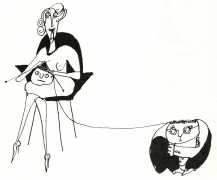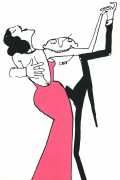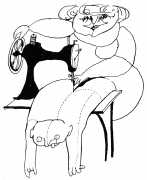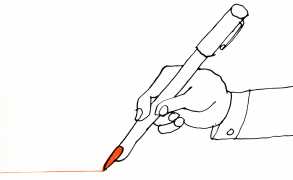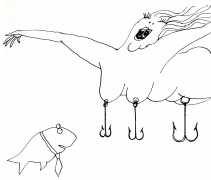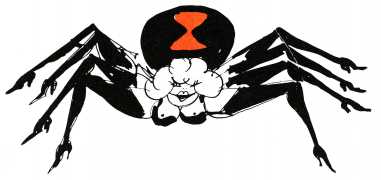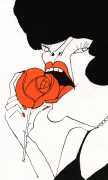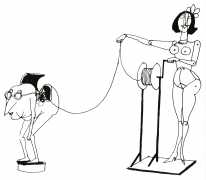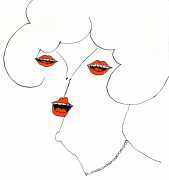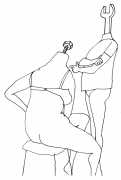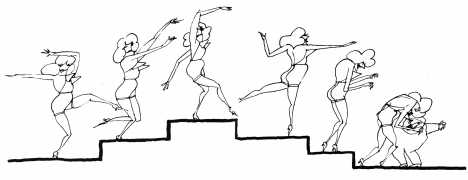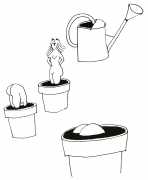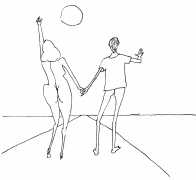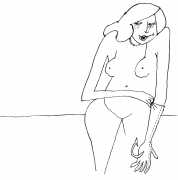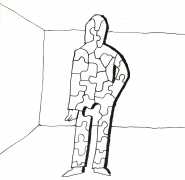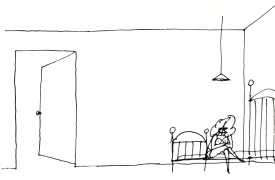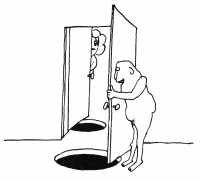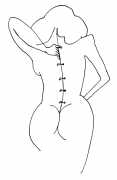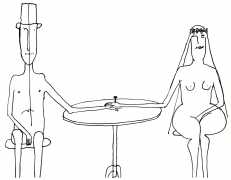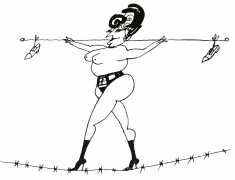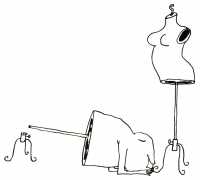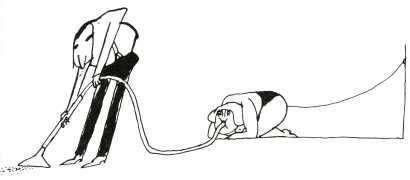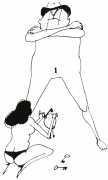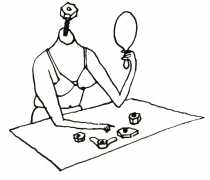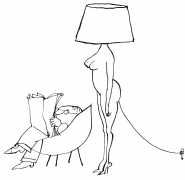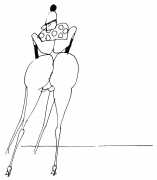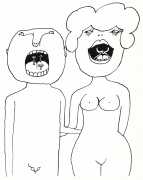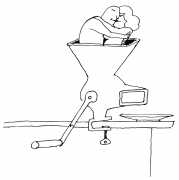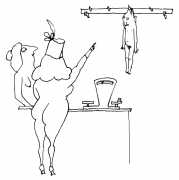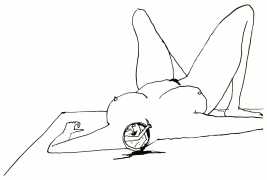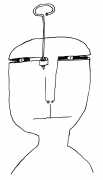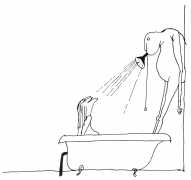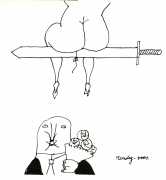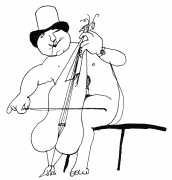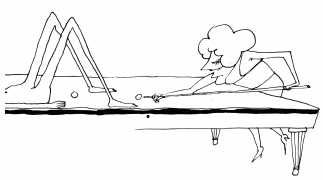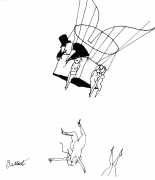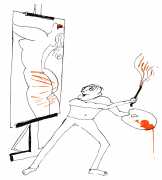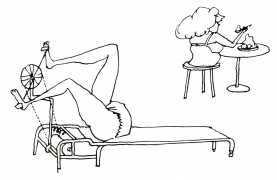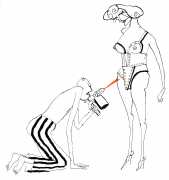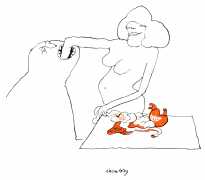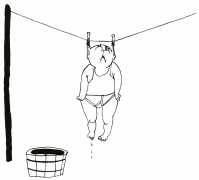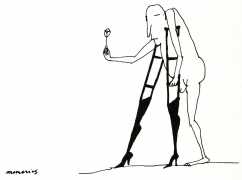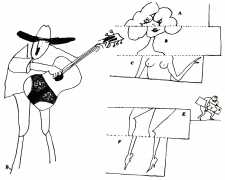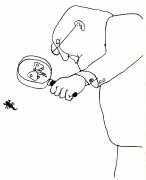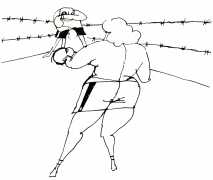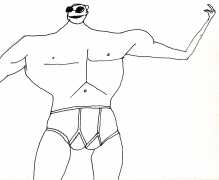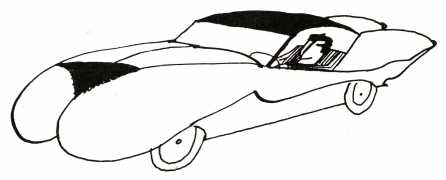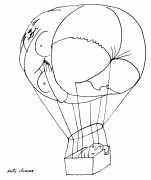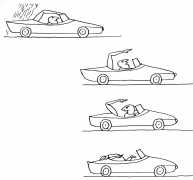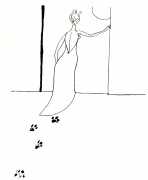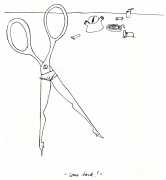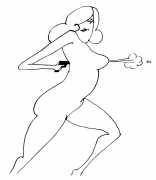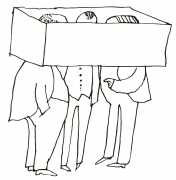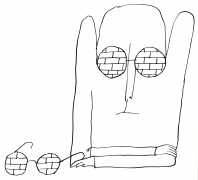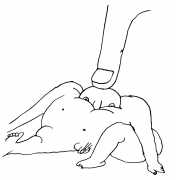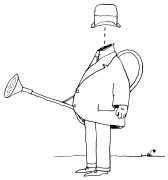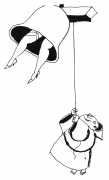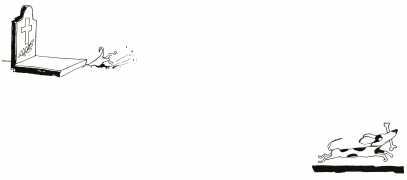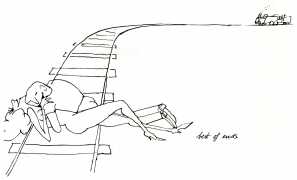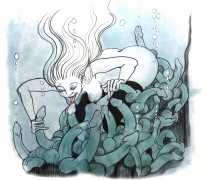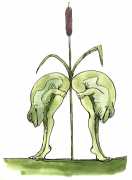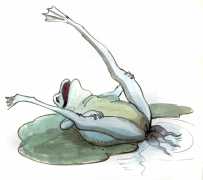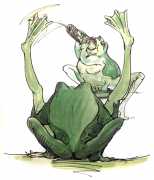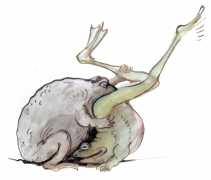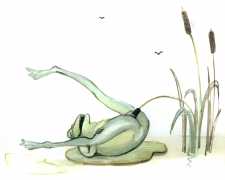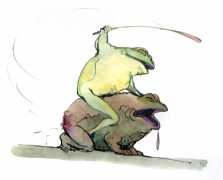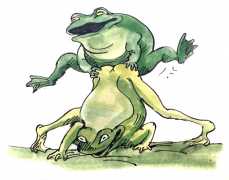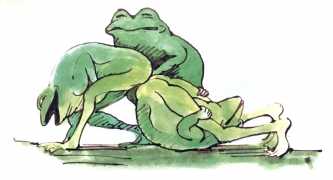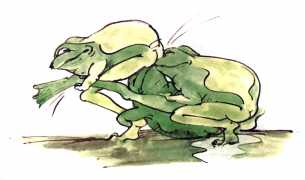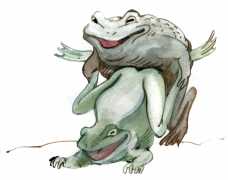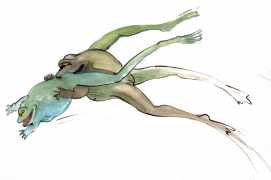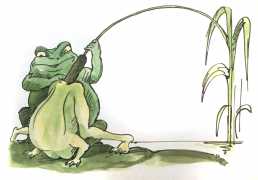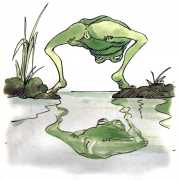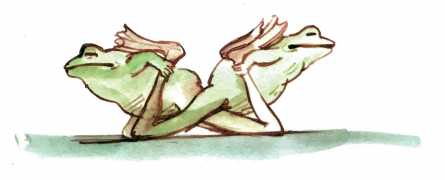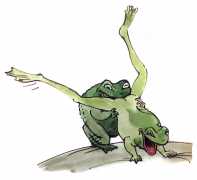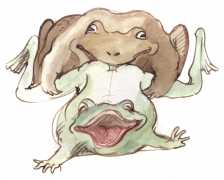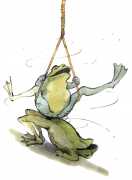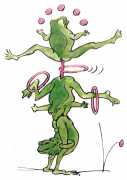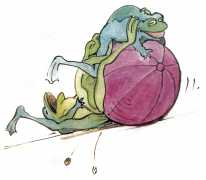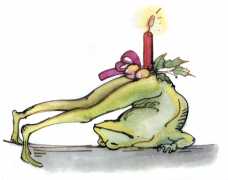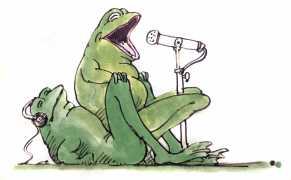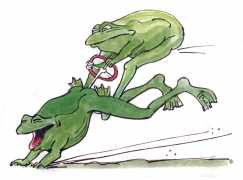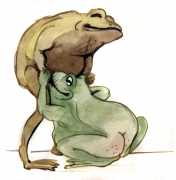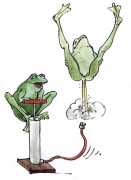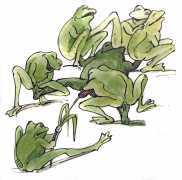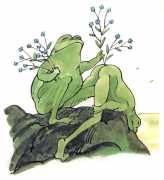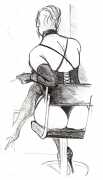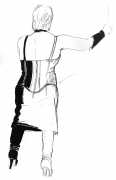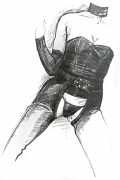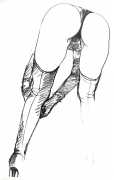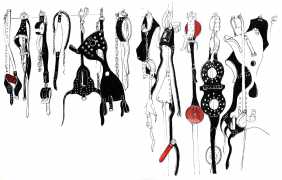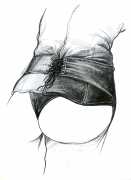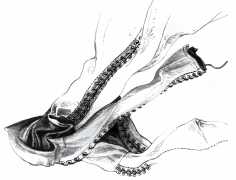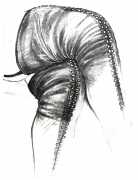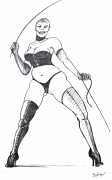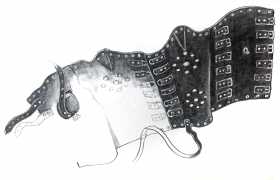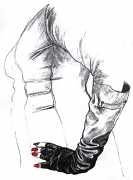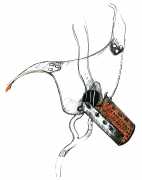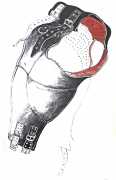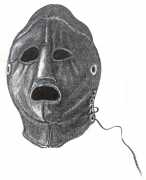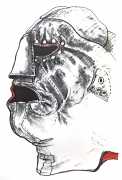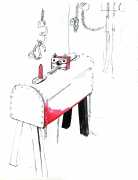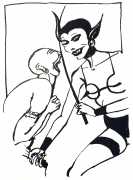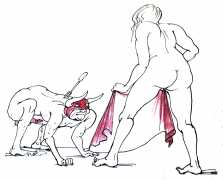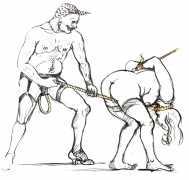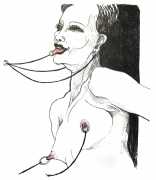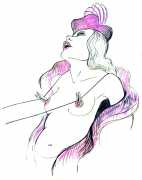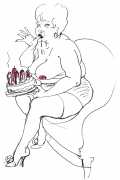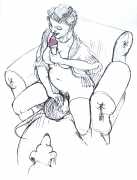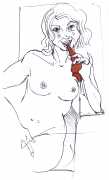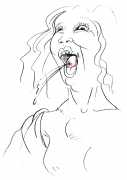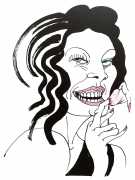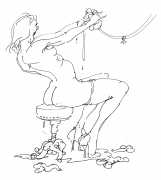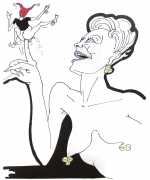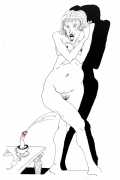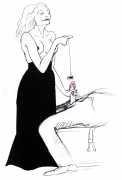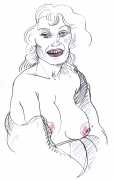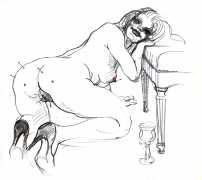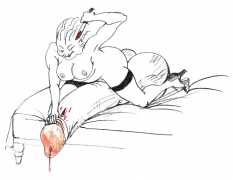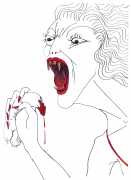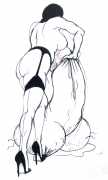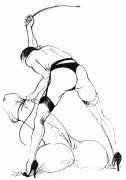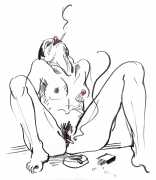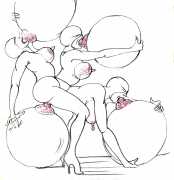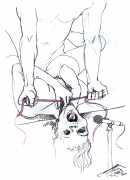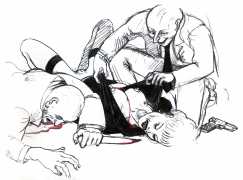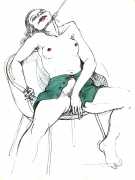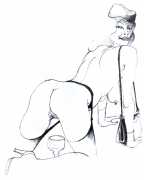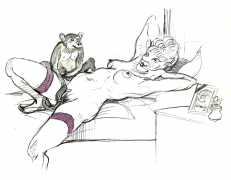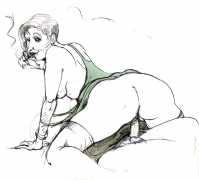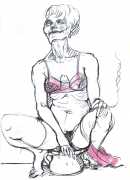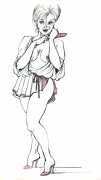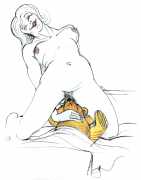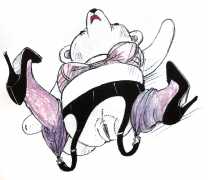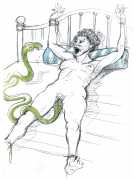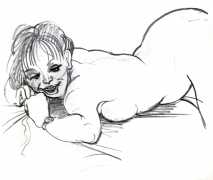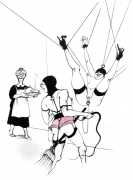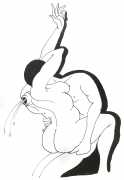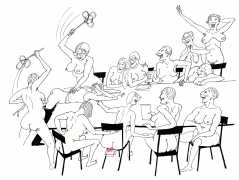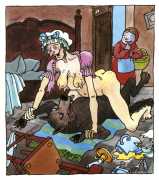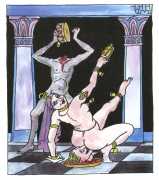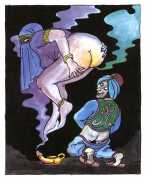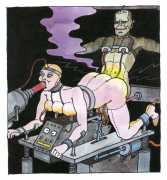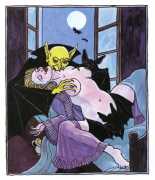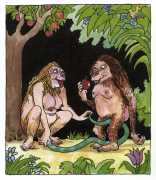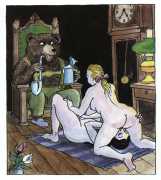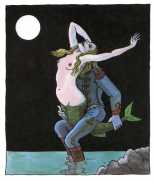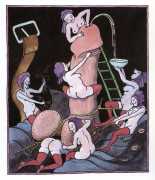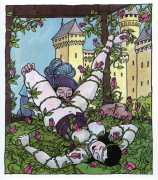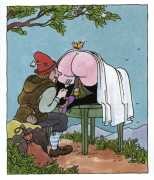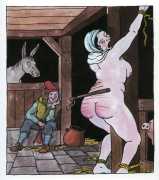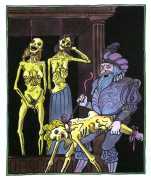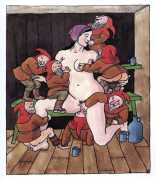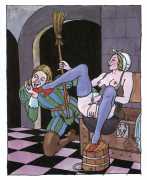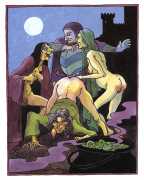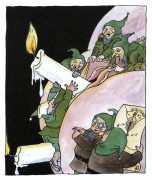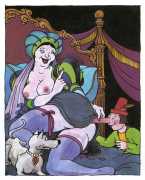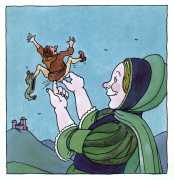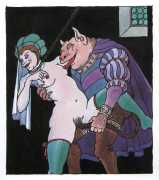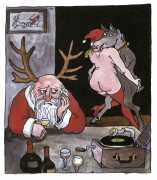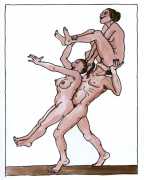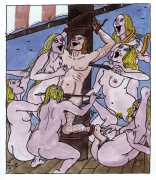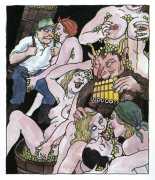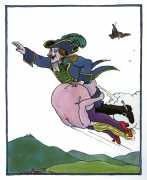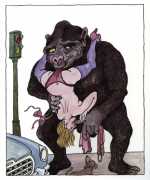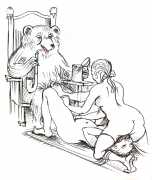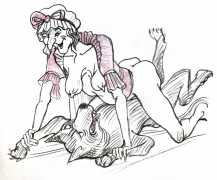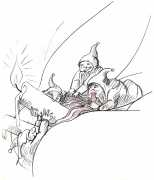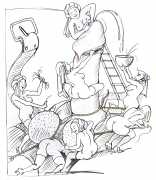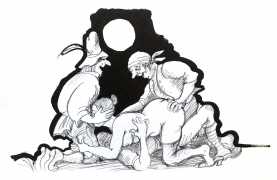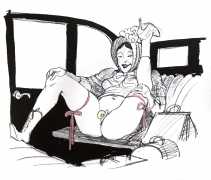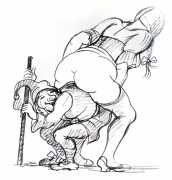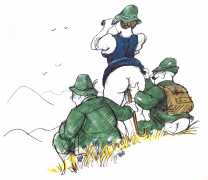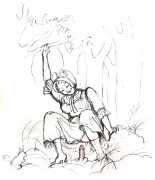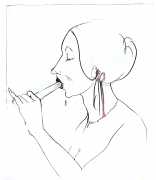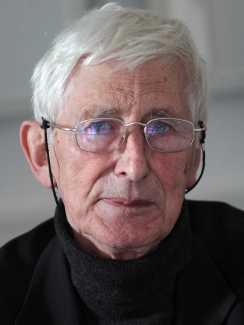 Tomi Ungerer was a formidable one-off, a talented and original artist who was always at the forefront of radical and forward-thinking movements, whether anti-authority and pacifist, internationalist and social justice. Always questioning, always provocative, in nearly 150 illustrated books he left his very distinctive mark on the world.
Tomi Ungerer was a formidable one-off, a talented and original artist who was always at the forefront of radical and forward-thinking movements, whether anti-authority and pacifist, internationalist and social justice. Always questioning, always provocative, in nearly 150 illustrated books he left his very distinctive mark on the world.
The youngest of four children, Jean-Thomas Ungerer was born in Strasbourg, the son of an artist, engineer and designer of astronomical clocks who died when Tomi was just three. His mother moved the family to Logelbach near the Alsatian city of Colmar. During the war years Ungerer was forced to join the Hitler Youth and dig trenches for the German army; even then his artistic talent was evident, filling his notebooks with battlefield scenes.
Hugely imaginative, he was described by one of his teachers as ‘a wilfully perverse and subversive individualist’. After failing his high school graduation exams he made his way to New York ‘with a trunk full of drawings and manuscripts’. In New York he found work as an illustrator for publications including the New York Times, Life and Harper’s Bazaar, creating posters for films including Stanley Kubrick’s Dr Strangelove (1964), and briefly sharing an apartment with novelist Philip Roth.
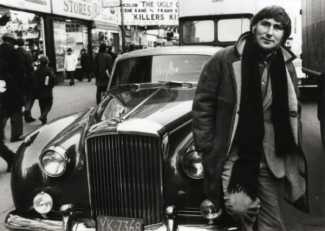
He became well-known for his illustrations for children’s books, including Jeff Brown’s 1964 classic Flat Stanley, about a boy who is crushed flat by a bulletin board, slips inside envelopes to travel by mail, and restores himself to proper size with the aid of a bicycle pump. He was writing children’s fiction, which he illustrated with his vivid and imaginative drawings, when he also began designing political posters that protested against segregation and the Vietnam War.
It was his erotic drawings, particularly those in Fornicon, a book of graphic depictions of sex that he published in 1969, that drew particularly condemnation. He recalled being confronted by angry children’s librarians at the American Library Association that year and when asked how he could depict such graphic sex, he replied, ‘If people didn’t fuck you wouldn’t have any children, and without children you would be out of work.’ The controversy led to Ungerer being effectively blacklisted in the United States, but in Europe his popularity soared, particularly in Germany and France where he sold millions of book. In 2007 a museum opened in Strasbourg dedicated to his life and work .
On the personal front his first two short-lived marriages ended in divorce, but in 1972 he married the writer Yvonne Wright and they moved first to a remote farm in Nova Scotia, and then to west Cork in Ireland, setting up home in an isolated farmhouse at the end of the Mizen Peninsula overlooking the dramatically scenic Dunlough Bay. Tomi and Yvonne had three children, daughter Aria and sons Pascal and Lukas (Tomi already had a daughter, Phoebe, from his marriage to Miriam Lancaster). Aria now curates the Tomi Ungerer website, which you can find here.
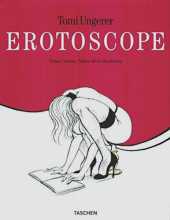 In 2001, to celebrate his seventieth birthday, Tomi Ungerer collaborated with the publisher Taschen to produce a large and representative selection of his erotic work called Erotoscope. Sadly the book has long been out of print, but in the introduction Ungerer describes his lifelong relationship with erotic art, which we include in full below. It is one of the best rationales for celebrating the life erotic to be written by an artist who thought and felt deeply about everything he drew.
In 2001, to celebrate his seventieth birthday, Tomi Ungerer collaborated with the publisher Taschen to produce a large and representative selection of his erotic work called Erotoscope. Sadly the book has long been out of print, but in the introduction Ungerer describes his lifelong relationship with erotic art, which we include in full below. It is one of the best rationales for celebrating the life erotic to be written by an artist who thought and felt deeply about everything he drew.
I was brought up strictly protestant. My father died when I was three – I was boarded with an uncle who was an evangelist preacher. Full of good intentions, he would sneak into my room at night to spirit away my drawings, which he then destroyed. Since God made man in his own image, my caricatures were in his eyes a desecration. In this case, God must have been endowed with a penis, which he used to spray the firmament with stars. Most likely his basic voyeur instincts prompted him to create Eve enhanced with an additional orifice to treat himself (with Adam’s help) to a spectacle of copulation which overcrowded our globe. Nobody has yet explained to me if Satan was created in his own image as well, or whether he is a kind of alter-ego of God. Of the protestantism I was impregnated with I have kept the moral values, but recycled the puritanism into eroticism and a definite delight in anything that feels or tastes good.
I spent my childhood in Colmar in Alsace, where I often visited the Unterlinden Museum. There I was awestruck by the Isenheim Altar by Matthias Grünewald. This masterpiece has deeply marked my life and branded my work. It was especially the Temptation of St Anthony which fascinated me. But why do the temptations take the form of repulsive monsters? To tempt, a temptation must be attractive. The worst temptations are the most seductive, and you might as well try out their delights to know what they feel like, provided it does no harm to anyone else. Morally, in eroticism anything goes between consenting partners.
For me, eroticism has been a liberation and an exorcism. That a mammalian sex, like a hunk of raw meat in heat, should plunge into a drooling orifice is rather banal, and the pleasure you get from it is hardly more than a few spasms and is much too brief. It is certainly a performance that provides love with proof as penetrating as penetrated.
Love and sex are blind. They lack fantasy, feelings come and interfere, followed by passion, clawing jealousy and the fetters of possessiveness. ‘Making’ love is no big deal except to give the ego a chance to show off.
I personally have always found pleasure given more rewarding than the pleasure received – a power trip based on performance. With time you buff up your act, give it a gloss. It’s a matter of formulae, of attaining the standards dictated by fantasy, which require a fine spectacle with all the bells and whistles. A production divided into scenes and acts, with well-chosen lighting effects, an orchestration of moans and howls, a select vocabulary, and the actors – multiplied by well-placed mirrors – becoming congeries of spectators.
Extravagance sparks improvisations. You look for contrasts. The smaller the woman, the bigger the prick. The spectacle varies with each partner’s needs, depending on individual obsessions, nibbling machines of desire that attack every last millimeter of the human body.
The slow, prolonged distillation of dilations. All tongues are beautiful; they are the clitoris of the brain. They are the only part of the body that doesn’t age. And even on your deathbed, you can stick out a tongue as fresh and pink as a dewy rose petal. Why should society impose norms of beauty? Beauty shows its true face when people come together in hope.
Even a woman some might call unattractive will look beautiful with her mouth dilated round a succulent shaft. And a rump can have as many expressions as a face – grumpy, frowning, smiling, engaging, jovial, open-minded. Eroticism is a mother of invention, a jack of all trades, inspiring rites and games. The human body is the finest toy that ever was. When tickled, it can laugh; tweaked, it kicks; whipped, it can whinny and whine. For my pen, my brush or my pencil, it is a source of inspiration as beautiful as nature itself. What is the difference between erotic art and pornography? One trips here over the principle of relativity with its hordes of interpretations.
Theologists, psychologists and analogists have been masturbating their brains trying to extract a valid answer. For the puritan, anything sensuous is obscene – nudity doesn’t arouse a naturist or a pigmy – and for the shoe fetishist, a pair of slippers has less sex appeal than stilettos. One man’s eroticism is another man’s vice. If people had more courage to realise their erotic fantasies, there would be no more pornography.
In our Judeo-Christian society, we do not have gods and goddesses of sex, as other cultures do. There are no saints to pray to for an erection (St Viagra?), nor any you can offer thanks for a fine orgasm. Monotheism with its taboos has foisted hypocrisy on us. Yet taboos are the fertilisers of eroticism. Forbidden fruits are the juiciest. One may wonder if the current permissiveness will mark the end of hidden thrills.
I discovered lust at the age of fourteen, when I found magazines full of libidinous ladies behind a row of leather-bound tomes in my father’s library. Erotic art has not been acknowledged as such. If the Mona Lisa held a primed cock in her hands, the painting would cease to be a masterpiece. Without arms, the Venus de Milo cannot touch herself any more.
There is a transcendental spirituality in the erotic process. Every orgasm is a mystic window that gives us a glimpse of eternity. A glorification of sex. Respectful admiration of the human body, with its orifices, redolent glands, limbs and organs living together in harmony.
For the erotomaniac that I have become, drawing is a form of expression without limits or hang-ups, where facts and fancy blend. It has become both a tool and a weapon — whether in advertising, social satire or my political involvement. A large part of this volume is a satire of the very same eroticism that ultimately haunts us.
And when I poke fun at others, I’m getting at myself as well. The joke is on me.
In the USA my children’s books have been excommunicated. At a congress of children’s librarians, I was once attacked publicly – ‘You have no right to publish children’s books and erotic ones.’ I answered: ‘Without fucking, no children – and without children you’d all be out of work! I draw the fucking and I draw for the children born as a result!’ That was that! Anyway, children nowadays know where babies come from. They don’t know where adults come from. But I wouldn’t want this volume to fall into innocent childish hands. You have to grow up to learn that sex is a need with an appetite, and that eroticism is what gastronomy is to food.
I am an ‘agent provocateur’. I love to shock, I love putting taboos through the hoops, without sparing hypocrisy, showing up the ridiculousness of our rarely human condition. I felt understood when I was given the Goethe Foundation prize as a ruthless moralist! It was the finest of compliments for the rascal I am.


